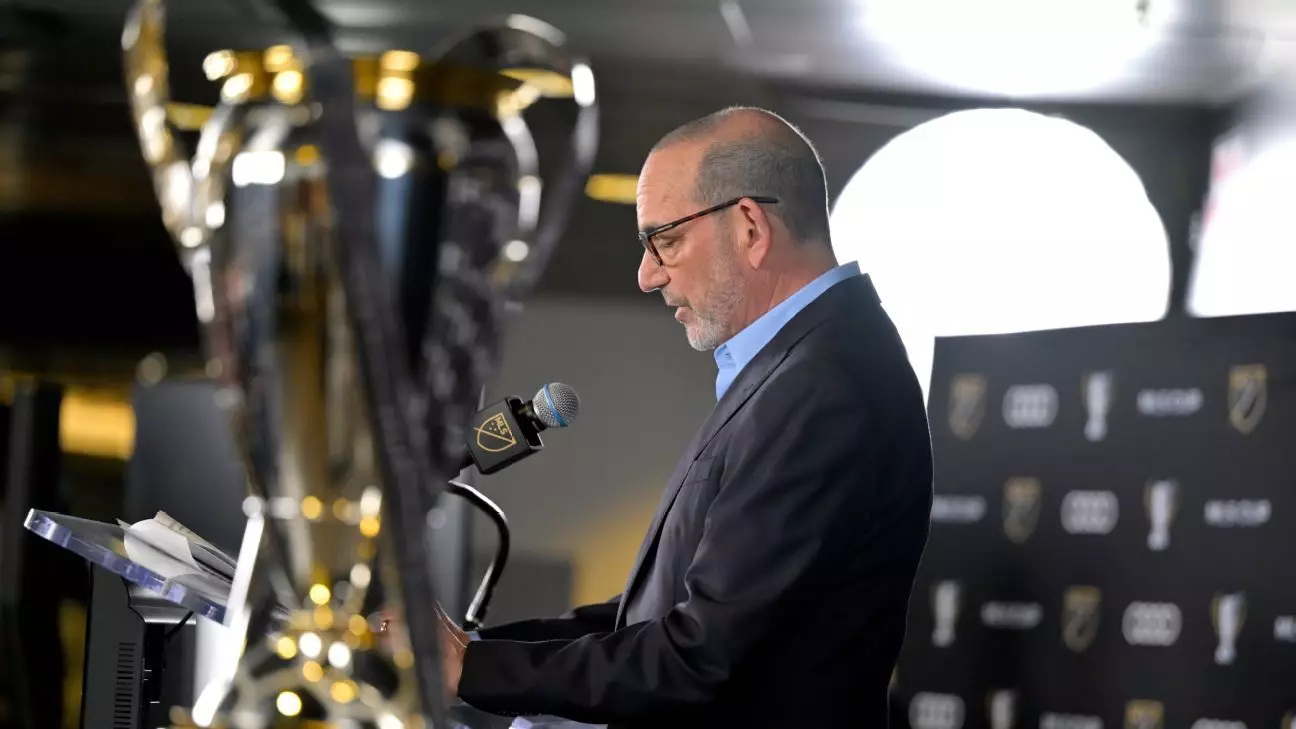As Major League Soccer (MLS) continues to grow in popularity and scope, the league faces undeniable challenges and opportunities that will shape its future. During a recent press briefing, MLS Commissioner Don Garber highlighted the increasingly congested calendar that the league must navigate while contemplating potential shifts in its scheduling format. This complex landscape reveals both the ambitions of MLS and the hurdles ahead, as it strives to align more closely with global soccer traditions, particularly those in Europe.
Garber’s remarks point to a significant discussion among league stakeholders regarding the potential alignment of the MLS calendar with European leagues. Historically, MLS has operated on a traditional February to December schedule; however, the notion of shifting to a fall-spring format has been revisited multiple times, most notably in 2004 and 2014. The growing intensity of the soccer calendar is a compelling reason for this consideration, as both domestic and international tournaments vie for players’ and fans’ attention.
The impact of international competitions on the league schedule cannot be overstated. The summer months are now heavily occupied by international tournaments, which, in turn, complicate the management of league activities. The congested fixture list has already led to a scenario in which not all teams can compete in each tournament, notably the U.S. Open Cup, which only featured eight MLS teams last season. Garber’s acknowledgment that they will strive to include more teams in the upcoming tournament highlights the desire for equitable competition while acknowledging the practical limitations of time and scheduling.
The challenges surrounding tournament participation reveal the complexity of modern soccer. With the introduction of competitions such as the Leagues Cup, Club World Cup, and the U.S. Open Cup, MLS is encountering an unprecedented level of tournament congestion. In light of this, Garber expressed the league’s intention to temporarily pause normal league play during significant events like the 2026 World Cup, placing additional pressure on the league’s scheduling and logistics.
This congestion raises a pertinent question: How can MLS ensure all clubs have appropriate opportunities to win trophies while managing an overcrowded calendar? Garber emphasized the importance of providing all teams with pathways to success, potentially through adjusting participation in various tournaments. The goal is clear: foster a competitive environment across teams while managing resources effectively.
As the league evolves, so too does its strategy for regional rivalries and fan engagement. The adjustment to the Leagues Cup format, which is expected to see participation limited to 18 teams, underscores a strategic pivot toward maximizing the rivalry between MLS and Liga MX teams. Garber accentuated the necessity for more matches between the two leagues in order to bolster interest and attendance. This emphasis on rivalry resonates strongly with fans and serves to enhance the competitive spirit of the league, ultimately benefiting the growth of soccer in North America.
Additionally, the unique phenomena surrounding the arrival of Argentine superstar Lionel Messi has exponentially heightened interest in the MLS. The unexpected success of Messi in attracting larger crowds during away matches illustrates not only his individual impact but also the league’s potential to capitalize on star power. Garber was unequivocal in his admiration for Messi’s influence, correlating the elevated fan engagement to the Argentine’s appeal and dedication to the league.
Garber’s insights into the current media landscape reveal a coaching phase in MLS’s relationship with broadcasting. The partnership with Apple TV has been groundbreaking for the league, but there remains an uneasiness regarding how viewership should be quantified. With the novelty of “destination viewership” emerging as a dominant model, Garber advocates for flexibility in how metrics are interpreted and reported.
The league’s successful average of over a million viewers on Saturday nights signifies a substantial advancement in interest but raises important questions about how to gauge engagement effectively. The transition from conventional broadcasting to a more integrated digital experience poses its unique challenges, yet Garber remains optimistic about the partnership and its potential to redefine the fan experience.
As MLS looks to the future, Garber reassured that while there may not be drastic changes in roster spending, the league remains devoted to finding innovative methods of enhancing competitiveness among its clubs. With a focus on maximizing existing resources and fostering youth talent, MLS stands at the precipice of a transformative era in American soccer.
The evolution of Major League Soccer reflects a league both tackling the difficulties of a congested calendar and capitalizing on its growing stature. Balancing international engagements, fostering rivalries, harnessing media opportunities, and aligning with global standards are central to MLS’s ongoing journey. The league’s willingness to adapt underscores not just its ambition but its commitment to becoming a staple of the global soccer community. The coming years hold the potential for significant growth and excitement as MLS navigates these challenges and opportunities.

